First electric with sports genes from the German brand, the Volkswagen ID.4 GTX marks the beginning of a new era at Volkswagen, debuting the acronym with which the German brand plans to designate the sportier versions of its electric cars.
In the acronym GTX, the “X” intends to translate electric sports benefits, just as the “i” had a similar meaning in the 1970s (when the first Golf GTi was “invented”), the “D” (GTD, for “spicy” diesels ) and the “E” (GTE, for plug-in hybrids with “first water” performances).
Scheduled for arrival in Portugal in July, Volkswagen's first GTX will be available from 51,000 euros, but is it worth it? We've already tested it and in the next few lines we'll give you the answer.
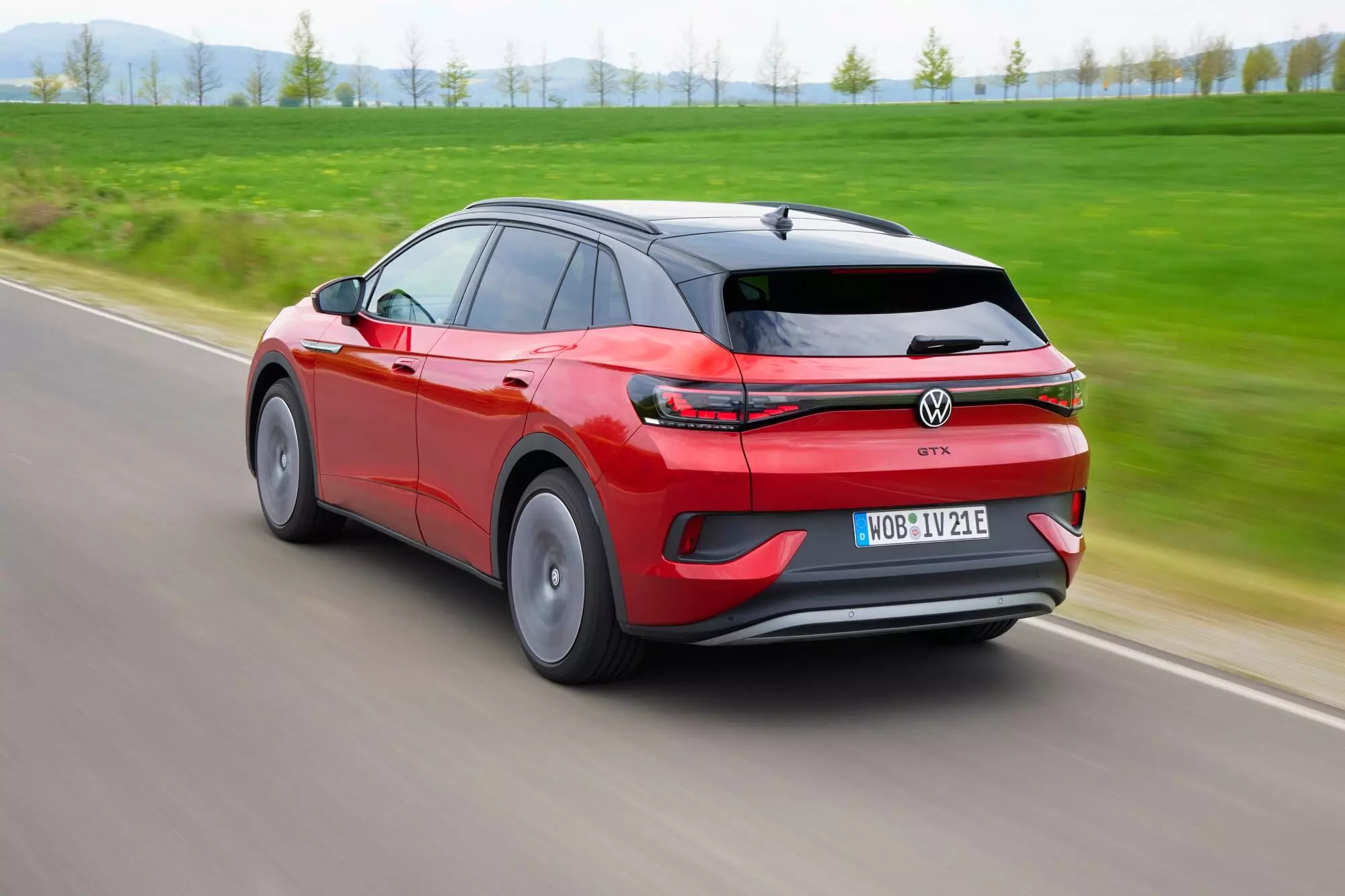
sportier look
Aesthetically, there are some visual differences that can be quickly detected: the roof and rear spoiler painted in black, the roof frame bar in shiny anthracite, the lower front grille also in black and the rear bumper (larger than on the IDs. 4 less powerful) with a new diffuser with gray inserts.
Inside we have sportier seats (a little stiffer and with reinforced lateral support) and it is noted that Volkswagen wanted to make the presentation “richer” than other less powerful ID.4s, criticized for their too “simplistic” plastics .
Thus, there is more skin (synthetic, as no animals were harmed in the production of this car) and topstitching, all to increase the perceived quality.

Sporty but spacious
In short, it's important to remember that being an electric vehicle, the ID.4 GTX has more interior space than its combustion engine counterparts, after all we don't have a bulky gearbox and the front electric motor is much smaller than a heat engine.
For this reason, passengers in the second row of seats enjoy much greater freedom of movement and the volume of the luggage compartment is a reference. With 543 liters, it “loses” only to the 585 liters offered by the Skoda Enyaq iV (with which it shares the MEB platform), surpassing the 520 to 535 liters of the Audi Q4 e-tron, the 367 liters of the Lexus UX 300e and the 340 liters of the Mercedes-Benz EQA.
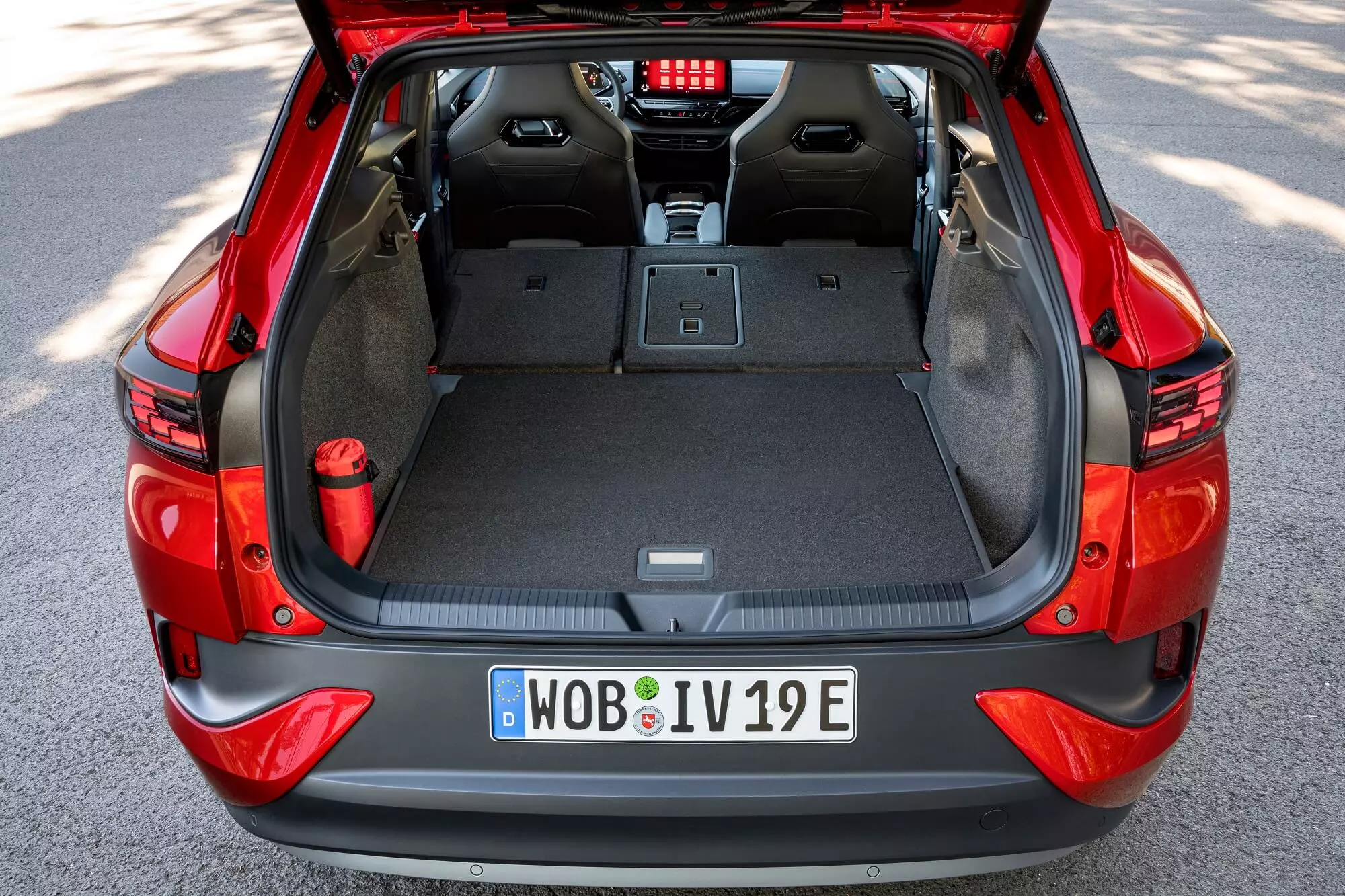
Proven solutions
With the Volkswagen ID.3 and Skoda Enyaq iV already rolling on European roads, there aren't many secrets left about the MEB platform. The 82 kWh battery (with a guarantee of 8 years or 160 000 km) weighs 510 kg, is mounted between the axles (the distance between them is 2.76 meters) and promises 480 km of autonomy.
At this point, it should be noted that the ID.4 GTX accepts charging in alternating current (AC) up to 11 kW (it takes 7.5 hours to completely fill the battery) and in direct current (DC) up to 125 kW, which means that it is possible to “fill” the battery from 5 to 80% of its capacity in 38 minutes on DC or that in just 10 minutes 130 km of autonomy can be added.
Until recently, these numbers would be at the level of the best in this market range, but the imminent arrival of the Hyundai IONIQ 5 and Kia EV6 came to "shake" the system when they appeared with a voltage of 800 volts (double what it has Volkswagen) which allows charges to be made up to 230 kW. It is true that today it will not be a decisive advantage because there are few stations with such high power, but it is good that European brands react quickly for when these charging points abound.
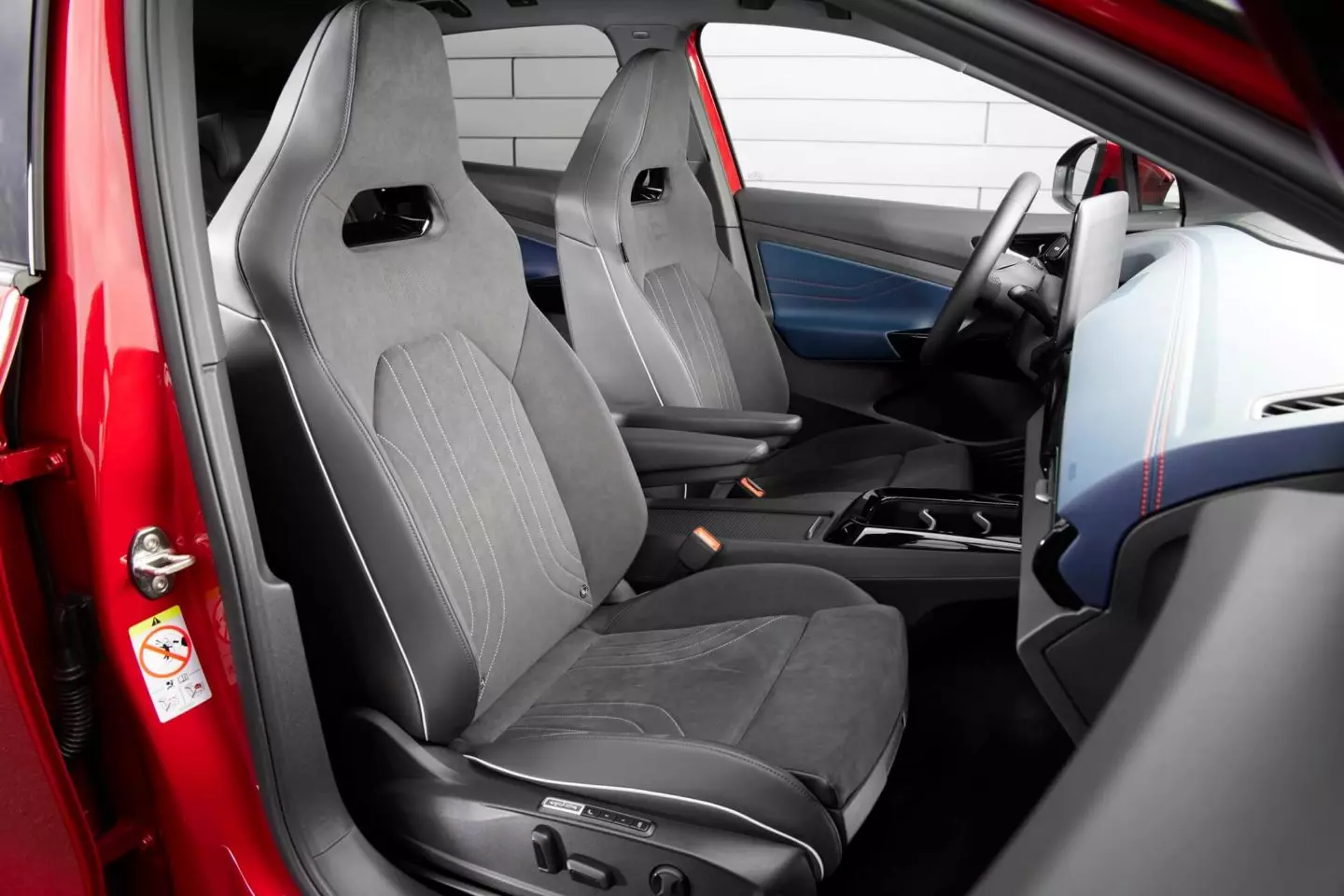
Sporty front seats help the ID.4 GTX stand out.
The suspension uses a MacPherson architecture on the front wheels while at the rear we have an independent multi-arm axle. In the field of braking we still have drums on the rear wheels (and not discs).
It may seem strange to see this solution adopted for the sportier version of the ID.4, but Volkswagen justifies the bet with the fact that a good part of the braking activity is the responsibility of the electric motor (which converts kinetic energy into electrical energy in this process) and with the least risk of corrosion.
Find your next car:
299 hp and all-wheel drive
The Volkswagen ID.4 GTX presentation card contains a maximum output of 299 hp and 460 Nm, provided by two electric motors that independently move the wheels of each axle and have no mechanical connection.
The PSM rear engine (permanent magnet synchronous) is responsible for the GTX's locomotion in most traffic conditions and achieves 204 hp and 310 Nm of torque. When the driver accelerates more abruptly or whenever the intelligent management of the system deems it necessary, the front engine (ASM, that is, asynchronous) — with 109 hp and 162 Nm — is “summoned” to participate in the car's propulsion.
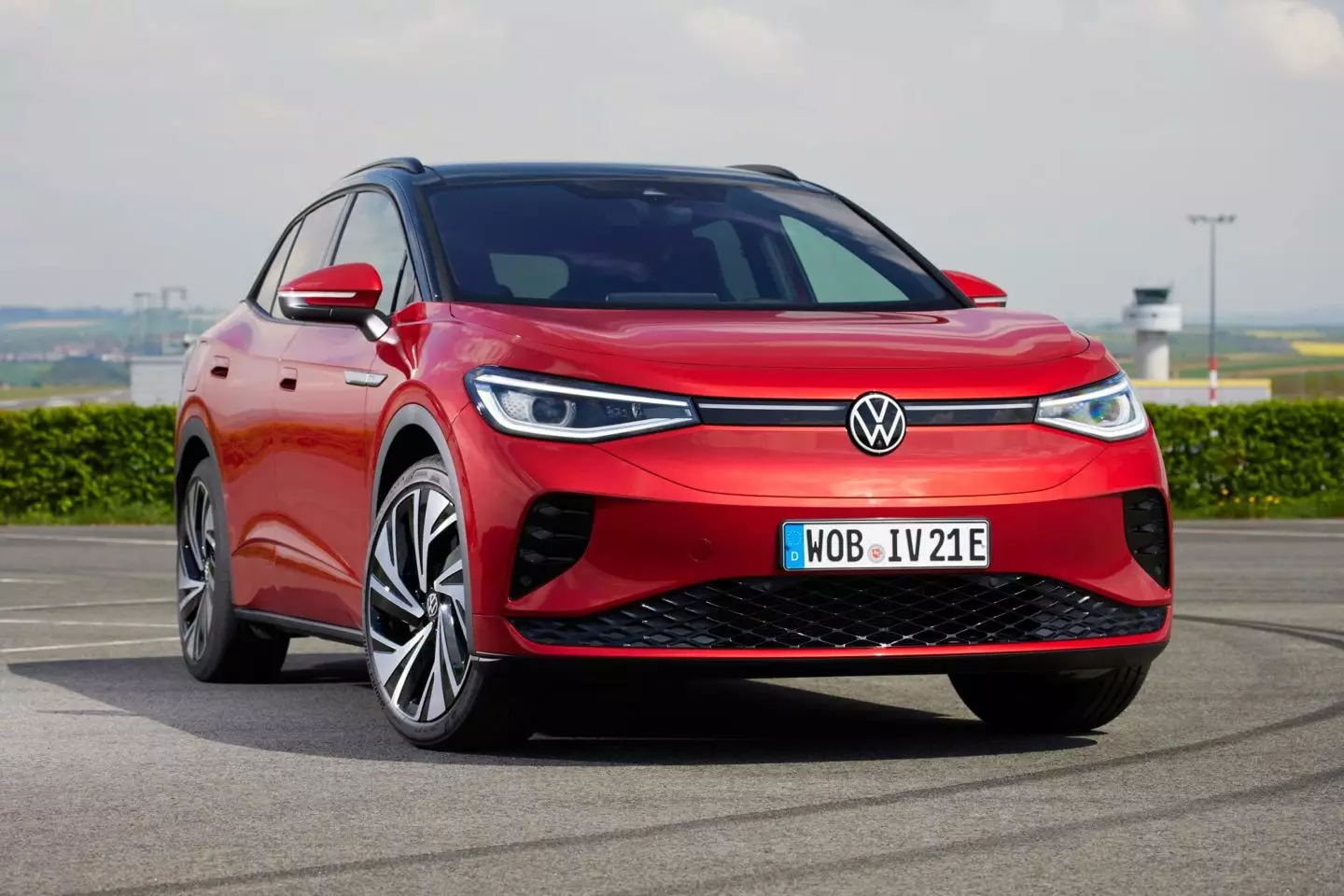
The delivery of torque to each axle varies according to grip conditions and driving style or even the road itself, reaching up to 90% ahead in very special conditions, such as on ice.
Both engines participate in energy recovery through deceleration and, as explained by Michael Kaufmann, one of the technical directors of this project, “the advantage of using this type of mixed scheme is that the ASM engine has less drag losses and is faster to be activated”.
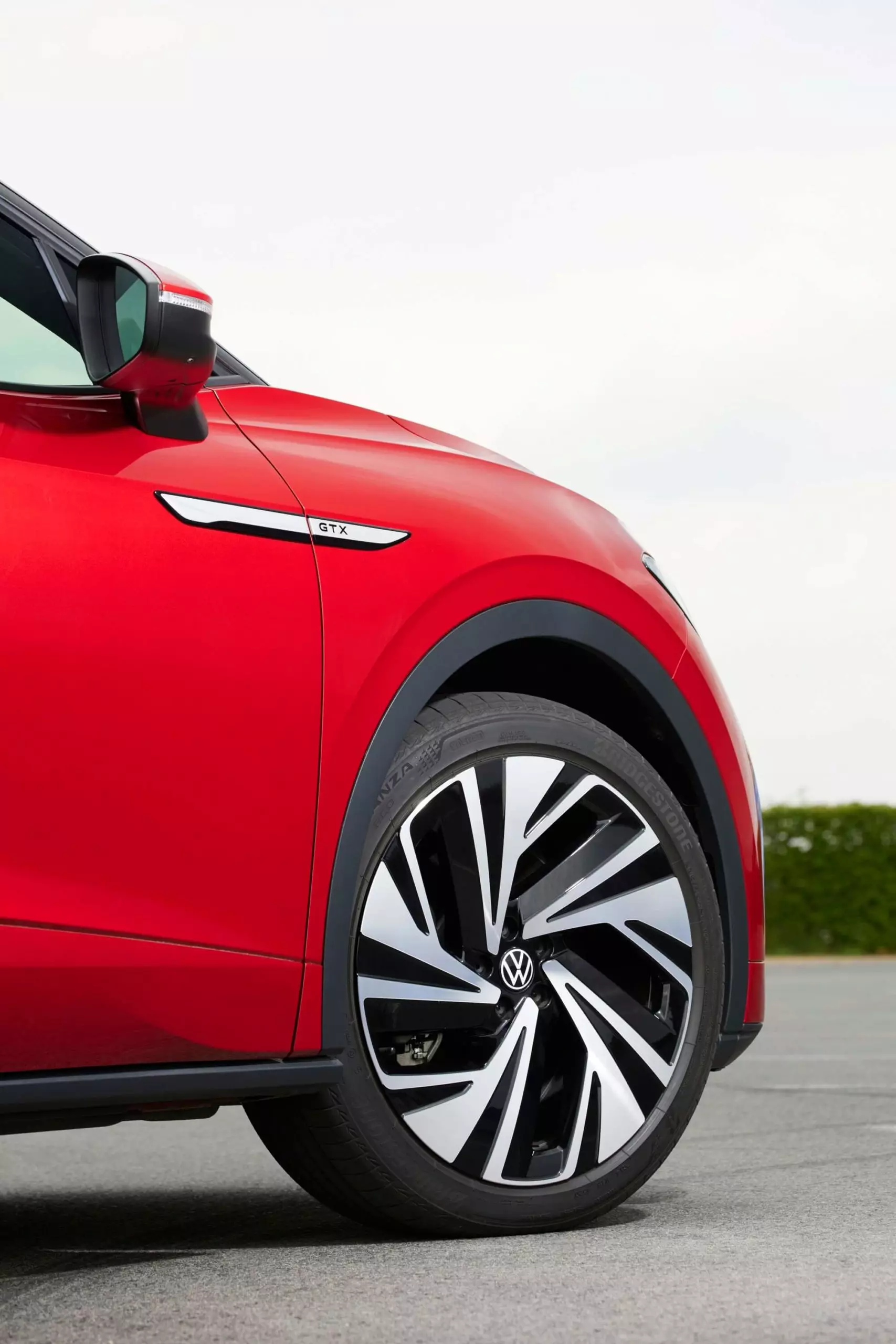
Competent and fun
This first experience behind the wheel of the sportiest of the IDs was made in Braunschweig, Germany, in a mixed route of 135 km passing through the highway, secondary roads and the city. At the beginning of the test, the car had a battery charge of 360 km, ending up with 245 autonomy and an average consumption of 20.5 kWh/100 km.
Considering the high power, the fact that there are two engines receiving energy and the official declared value of 18.2 kWh, this was a very moderate consumption, to which the ambient temperature of 24.5º will also have contributed (batteries like mild temperatures, just like humans).
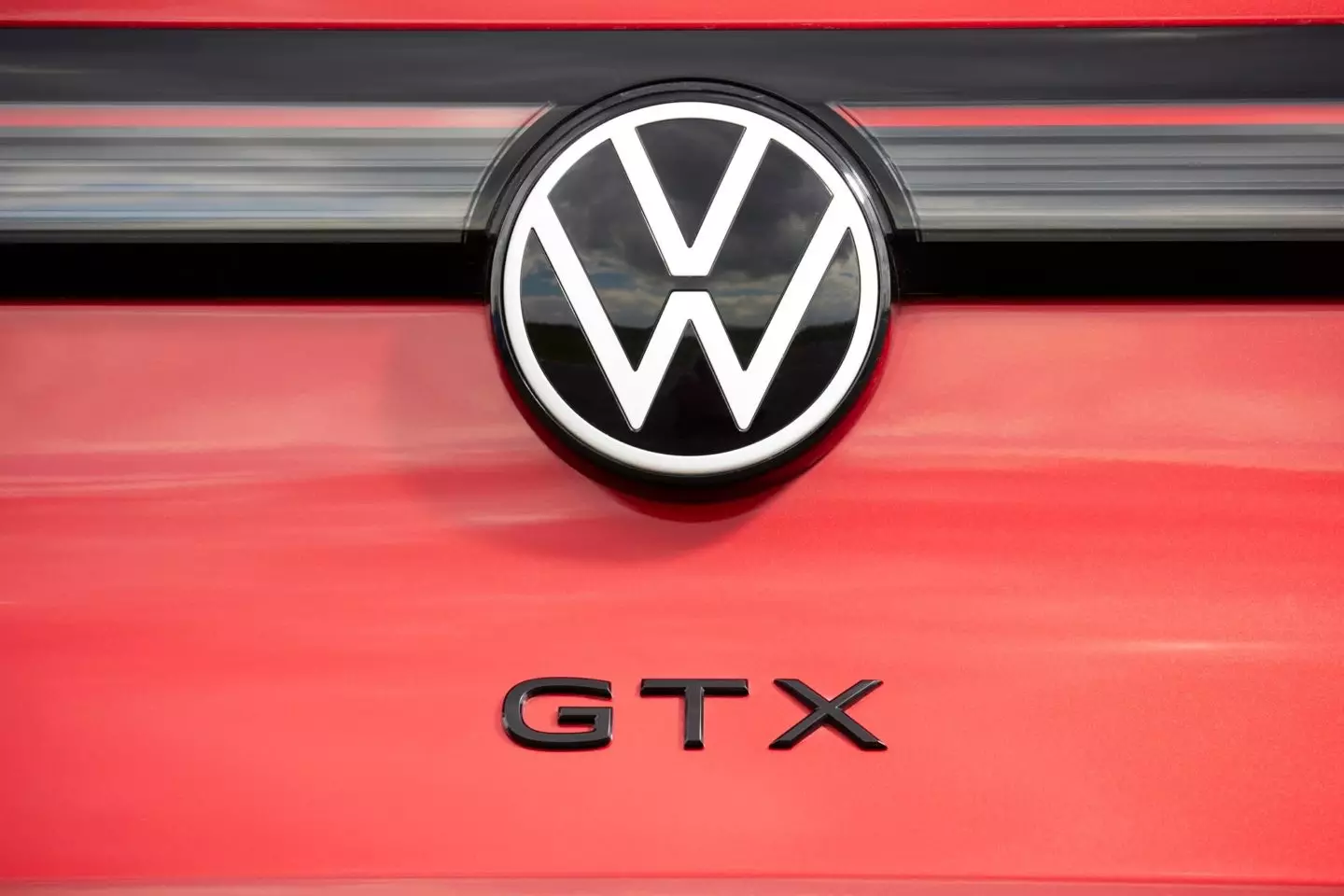
The "GTX" logos leave no doubt, this is the first electric Volkswagen with sporty aspirations.
This average turns out to be even more impressive when we take into account that we made several more forceful accelerations and speed regains (even without trying to equal 0 to 60 km/h in 3.2 seconds or to 0 to 100 km/h in 6.2) and also various approaches to the maximum speed of 180 km/h (a higher value than the 160 km/h of the “normal” ID.4 and ID.3).
In the dynamic field, the “step” of the Volkswagen ID.4 GTX is quite firm, something that is not surprising considering that it weighs more than 2.2 tons and when cornering the fun is guaranteed with the direction being progressive (how much the more you turn the direction, the more direct it becomes), with only some tendency to widen trajectories when approaching the limits.
The version we tested had the Sport Package which includes suspension lowered by 15mm (leaves the ID.4 GTX 155mm off the ground instead of the usual 170mm). The extra firmness provided by this suspension ends up making the electronic damping variation less noticeable (with 15 levels, another option that was mounted on the tested unit) on most floors, except when they are quite deteriorated.
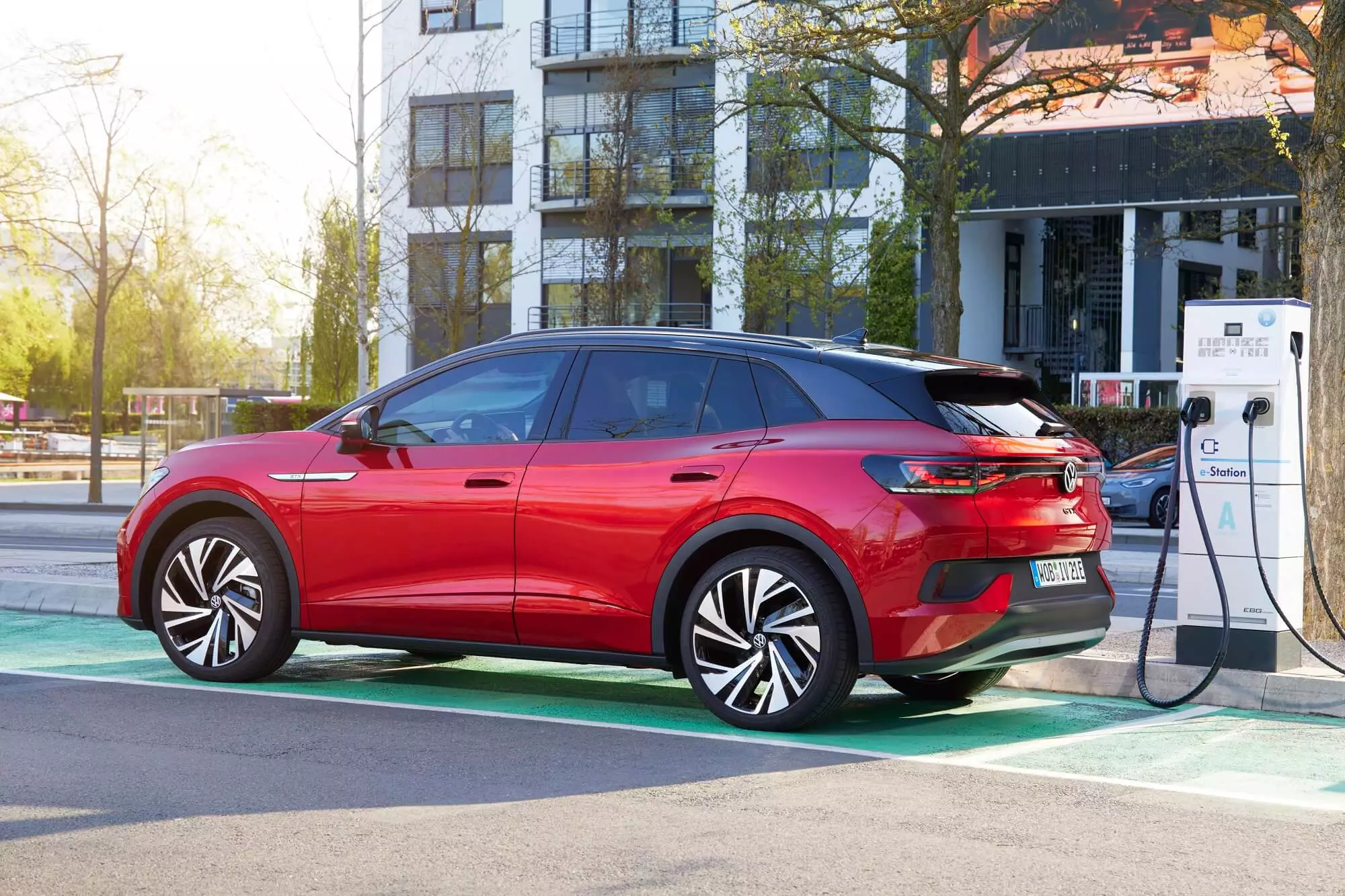
There are five driving modes: Eco (speed limits to 130 km/h, an inhibition that no longer exists when accelerating hard), Comfort, Sport, Traction (the suspension is smoother, the torque distribution is balanced between the two axles and there is a wheel slip control) and Individual (parameterizable).
About the driving modes (which change the “weight” of the steering, the accelerator response, the air conditioning and the stability control) it should also be mentioned that the instrumentation lacks the active mode indication, which can confuse the driver.
I noticed, on the other hand, the lack of regulation of driving modes via paddles inserted behind the steering wheel, as exists in the very intelligent system of the Audi Q4 e-tron. Volkswagen engineers justify the option “to try to drive the ID.4 GTX as much as possible to that of cars with gasoline/diesel engines and also because the bearing without retention is the most efficient way to drive an electric car ”.
It's accepted, but it's still interesting to be able to play with the deceleration, using the strongest levels to drive around town without touching the brakes and extending autonomy clearly in this scenario. Therefore, we have a 0 hold level, a B position on the selector (up to a maximum deceleration of 0.3 g) and also an intermediate hold in Sport mode.
In the rest, the steering (2.5 turns at the wheel) pleases for being quite direct and sufficiently communicative, an impression helped by its progressive technology in this version and the braking fulfills, with the speed reduction effect little evident at the beginning of the pedal stroke of the brake (as is common in electrified, electric and hybrid cars) because the hydraulic brakes are only called to act in decelerations above 0.3 g.
Datasheet
| Volkswagen ID.4 GTX | |
|---|---|
| Motor | |
| Engines | Rear: synchronous; Front: asynchronous |
| power | 299 hp (Rear engine: 204 hp; Front engine: 109 hp) |
| Binary | 460 Nm (Rear engine: 310 Nm; Front engine: 162 Nm) |
| Streaming | |
| Traction | integral |
| Gear box | 1 + 1 speed |
| Drums | |
| Type | lithium ions |
| Capacity | 77 kWh (82 "liquid") |
| Weight | 510 kg |
| Guarantee | 8 years / 160 thousand km |
| Loading | |
| Maximum power in DC | 125 kW |
| Maximum power in AC | 11 kW |
| loading times | |
| 11 kW | 7.5 hours |
| 0-80% in DC (125 kW) | 38 minutes |
| Chassis | |
| Suspension | FR: Independent MacPherson TR: Independent Multiarm |
| brakes | FR: Ventilated discs; TR: Drums |
| Direction/No. of turns | Electrical assistance / 2.5 |
| turning diameter | 11.6 m |
| Dimensions and Capabilities | |
| Comp. x Width x Alt. | 4582mm x 1852mm x 1616mm |
| Length between the axis | 2765 mm |
| suitcase capacity | 543-1575 liters |
| Tires | 235/50 R20 (front); 255/45 R20 (back) |
| Weight | 2224 kg |
| Provisions and consumption | |
| Maximum speed | 180 km/h |
| 0-100 km/h | 6.2s |
| Combined consumption | 18.2 kWh/100 km |
| Autonomy | 480 km |
| Price | 51 000 euros |
